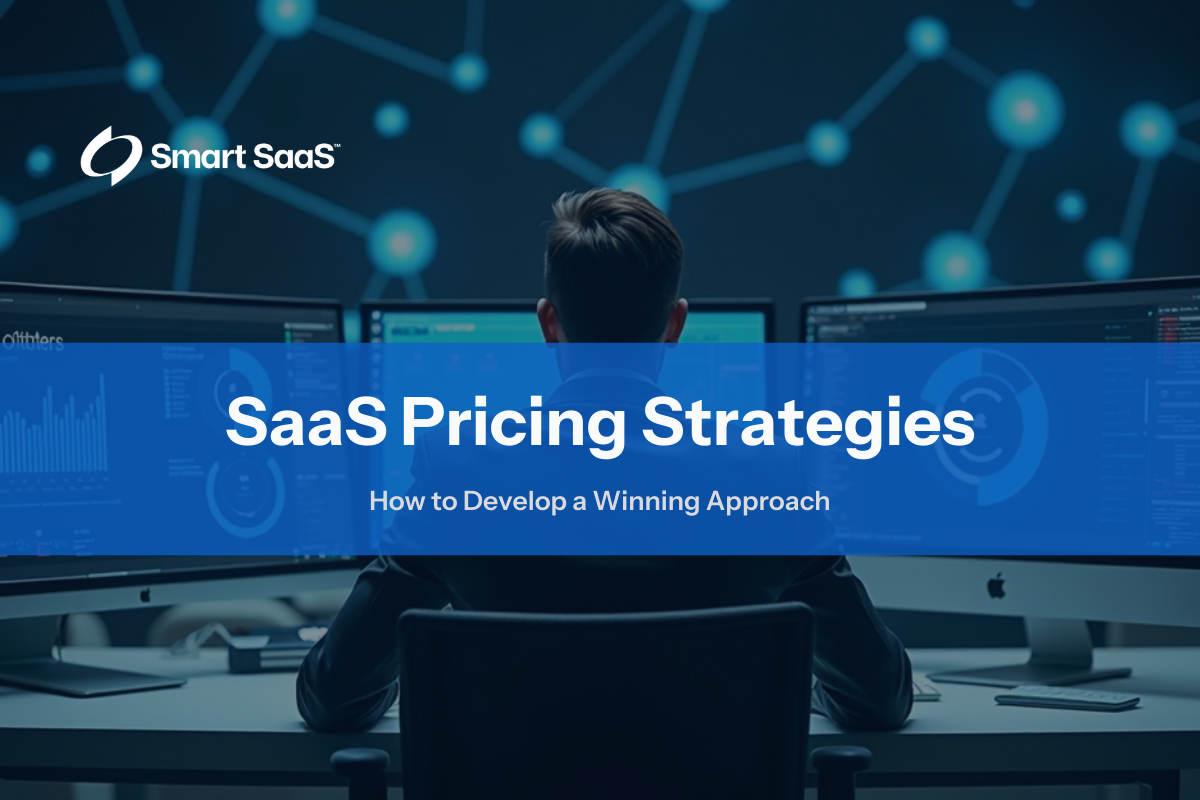

Monday, March 17, 2025
Kevin Anderson
Crafting a SaaS pricing strategy is more than just picking a few dollar amounts and slapping them on your website. It’s about understanding how your software generates revenue optimization, fosters customer retention, and aligns with the unique psychology of your market. Whether you’re offering a simple flat rate or a tiered approach, each pricing decision can affect conversions, churn, and overall brand perception.
As the SaaS industry matures, businesses must fine-tune their pricing experiments—testing different models, feature bundles, and behavioral triggers that encourage user adoption. All of this ties directly into SaaS pricing and packaging, combining the right price with a presentation that speaks to your audience’s needs and budget constraints. But how do you decide which route to follow—competitive pricing, dynamic pricing, or even revenue-based pricing?
Below, we’ll explore SaaS pricing best practices, detail how to build a winning strategy from scratch, and answer core questions like “How to determine SaaS pricing?” or “Why is pricing so important to a SaaS business?” By the end, you’ll have a clearer sense of what works, what to avoid, and how to create a long-term approach that drives both profitability and user satisfaction.

In the subscription-based world of Software as a Service, pricing acts like the gateway for prospective users. Too high, and potential customers feel alienated; too low, and your margins—plus perceived value—can erode. Beyond just revenue, your pricing strategy influences customer retention, upsell potential, and overall market positioning. Getting it right means striking a balance between driving recurring revenue and delivering enough perceived value to keep churn at bay. When you consider how integral monthly or annual subscriptions are to your monetization strategies, the stakes around pricing become even clearer. For more insights on market dynamics, see Vertical vs. Horizontal SaaS and Enterprise SaaS Pricing Models.
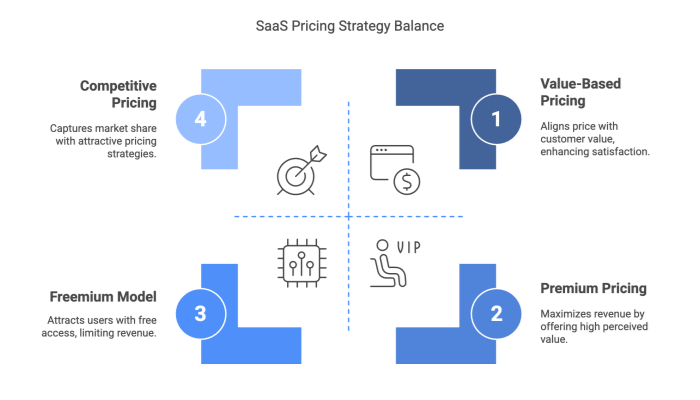

First, outline your product’s unique value proposition: does it save time, reduce labor, boost sales, or provide critical data insights? Next, analyze competitor benchmarks to set an initial range. Finally, test different price points or feature bundles with real customers—a step often overlooked. This iterative process ensures your final pricing resonates with genuine user expectations, not just theoretical models. For competitive insights, refer to The SaaS Business Model and Build a Successful SaaS Business Model.
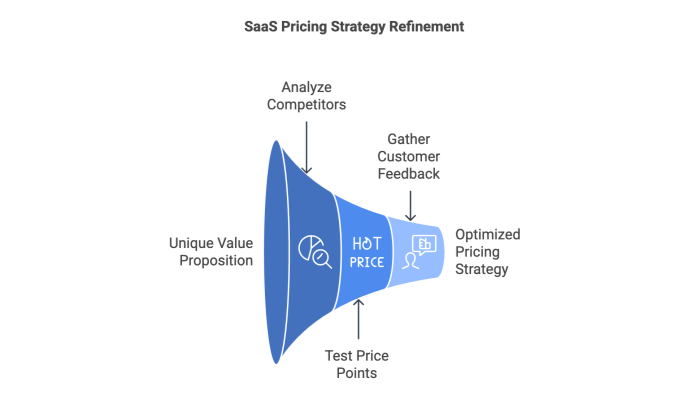

A successful pricing strategy for SaaS comprises multiple moving parts: cost structures, user segmentation, buyer psychology, and operational overhead. It should also factor in pricing experiments you might run—for instance, offering new tiers or limited-time discounts. Below are core considerations for building an approach that stands the test of time.
Your value metric is what your pricing revolves around—whether it’s per seat, per transaction, or data consumption. Aligning costs with how customers see ROI is pivotal for behavioral pricing. If you measure the wrong metric, users may perceive they’re overpaying or run into unexpected fees that hinder retention. For more on aligning value with cost, see SaaS Billing Strategies.
A strong SaaS pricing strategy demands you understand baseline costs: engineering, customer support, hosting fees, ongoing product updates, etc. Aim for a margin that supports growth and revenue optimization without scaring away leads. This cost baseline also helps you plan for fluctuations, such as new feature rollouts or spikes in user demand.
Not every subscriber will derive the same value from your software. Some might need advanced analytics, while others only want core functionalities. Crafting different tiers or feature bundles—SaaS pricing and packaging—lets you serve small teams economically while upselling enterprise customers with complex needs. This segmentation approach can also reduce churn by ensuring each group pays only for what they truly need.
Your chosen price points convey a subconscious message about your product’s quality and capabilities. Psychological pricing—like ending amounts in .99 or offering charm prices—can subtly shape buyer perception. Similarly, competitive pricing can position you above or below similar tools, influencing how potential users measure your value proposition. For additional strategies, review Vertical SaaS Innovation.
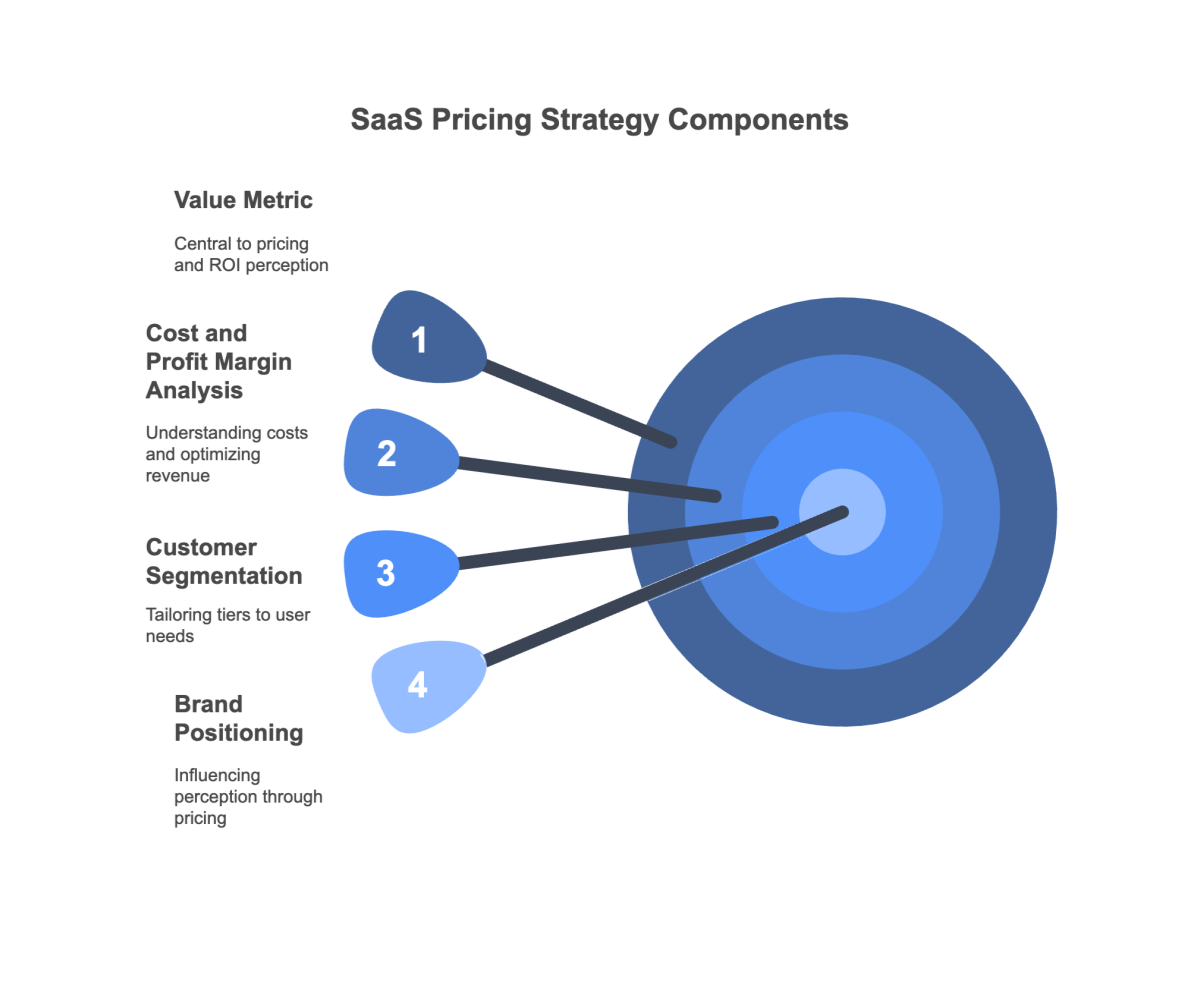

While each SaaS solution is unique, certain pricing models recur across the industry. Understanding their nuances helps you pick or blend approaches that best fit your user profiles and overall revenue optimization goals.
Tiered plans—Basic, Pro, Enterprise—form a classic approach. Each tier offers progressively higher-feature sets or usage limits. This model allows straightforward upsells but risks forcing some users to upgrade for minor features they consider essential. Mapping tiers to discrete value increments is vital for user satisfaction.
Freemium grants a limited, no-cost version to attract a wide audience, hoping they’ll eventually pay for premium features or more capacity. This can accelerate adoption, yet if the free tier feels too capable or the paid jump seems too steep, conversions stall. For guidance on effective freemium strategies, see What is SaaS.
Often favored by data- or transaction-heavy SaaS, usage-based billing ties cost to consumption. This works well when customers want to align spending with actual usage, removing friction for smaller or seasonal demands. At scale, however, usage-based can create unpredictable invoices, prompting some clients to prefer seat-based or tiered alternatives instead.
A single monthly or annual fee, covering all features. Flat-rate pricing reduces complexity and appeals to those wanting predictable budgets. On the downside, large customers may extract much greater value for the same price, potentially leaving your revenue below its potential.
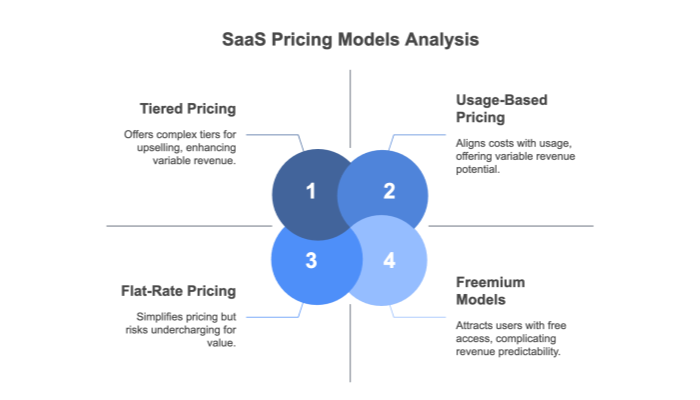

“What are the best practices for pricing a SaaS product?” is a question often asked, but B2B SaaS rarely offers a one-size-fits-all solution. Different businesses vary in size, compliance, or usage intensity, making a single approach inconsistent across segments.
In B2B scenarios, one client may only need 10 seats, while another demands hundreds or more. Usage-based charges may suit data analytics software but seem irrational for a small CRM. Meanwhile, advanced security or compliance modules might be essential for a healthcare client but overkill for a small marketing agency. This disparity curbs any universal approach.
Many B2B providers eventually adopt hybrid models—like combining seat-based tiers with usage-based overages or layering optional enterprise add-ons on top of freemium tiers. This hybrid logic acknowledges that user needs and budget tolerance vary widely within the same market, let alone across different verticals.
SaaS markets are crowded. You might face direct competitors with simpler or more flexible structures that appeal to cost-sensitive or smaller clients. Meanwhile, big enterprise deals might demand extensive negotiations, custom SLAs, or usage expansions that surpass standard tiers. The result is a continuing push and pull, preventing one single blueprint from dominating.


To craft a pricing strategy for SaaS that endures, you need a multi-faceted approach—one that balances user psychology, operational overhead, competitor positioning, and your brand’s unique value proposition. For additional perspective on market positioning, refer to Vertical SaaS Innovation and What is a SaaS Environment.
Psychology plays a crucial role in how customers perceive costs. Techniques like psychological pricing (.99 endings, tier naming like “Pro” or “Premium”) can subtly influence decision-making. Similarly, offering small annual discounts can nudge customers toward paying upfront, boosting recurring revenue predictability. Anchoring is another tactic—a high-priced plan makes your mid-tier look comparatively affordable, encouraging more sign-ups.
Constant iteration helps you find an optimal sweet spot. Tools for dynamic pricing or A/B testing let you present slightly different price points or packaging to small user subsets. Measure how conversions, churn, or average revenue change. These experiments can reveal surprising insights, such as an unexpected willingness to pay for an advanced add-on, or the effect of a modest price reduction on tier upgrades.
Large B2B clients often link costs to ROI. If your software directly increases their revenue—such as an e-commerce platform or a lead generation system—revenue-based pricing, which charges a percentage of extra sales generated, can be highly effective. However, this approach demands robust measurement capabilities to avoid disputes over data tracking.
A strong SaaS pricing strategy balances new customer acquisition with existing customer growth. Overemphasizing short-term gains can lead to high churn if the pricing model confuses or frustrates users. A moderate baseline plan paired with a clear upgrade path fosters long-term relationships, turning satisfied customers into brand advocates.
For additional strategies, see SaaS Security Concerns, Risks, Challenges and Solutions.


How to develop a SaaS pricing model? Ultimately, this process is iterative and data-driven. By adopting a structured approach, you can minimize guesswork and refine your offering in sync with user demand.
Identify the top benefit users gain—whether it’s time savings, revenue increases, compliance advantages, or real-time analytics. Align your pricing with that key value lever so that each plan or tier resonates naturally with customer needs.
Study both direct and indirect competitors to see how they structure their pricing and packaging. Pay close attention to emerging trends such as freemium tiers or dynamic usage-based models. This research provides valuable benchmarks and helps you differentiate your solution. For more on competitive pricing, review How to Structure SaaS Pricing Tiers.
Lay out potential tiers (e.g., Basic, Pro, Enterprise) or thresholds for usage-based fees (like data volume). Decide which features belong in each plan, ensuring that every price increase correlates with a clear jump in value. This step is critical for behavioral pricing and customer satisfaction.
Introduce your new pricing to a limited group of beta testers or new signups. Gather feedback regarding fairness, clarity, and perceived ROI. Monitor metrics such as churn and upgrade rates to identify areas for improvement. Adjust your seat counts, data caps, or discount structures accordingly. This iterative process ensures your pricing strategy truly resonates with your market.
Create a clear and concise pricing page that outlines each tier. Use bullet points to highlight main benefits, and designate a “most popular” option to guide customer decisions. Incorporate customer testimonials and success metrics to reinforce the value of each plan. A well-optimized pricing page not only drives conversions but also builds credibility.
Continuously track user behavior and market changes. If competitors adjust their pricing or new features alter your value proposition, be prepared to tweak your model. Regular monitoring and iteration help you stay ahead of churn triggers and maintain a pricing structure that adapts to evolving customer needs.
By following this step-by-step process, you can develop a pricing model that is both flexible and sustainable. Regularly updating your approach based on feedback and market trends is key to maintaining competitive advantage. A dynamic pricing strategy not only supports revenue growth but also solidifies customer loyalty by ensuring that costs always align with delivered value.
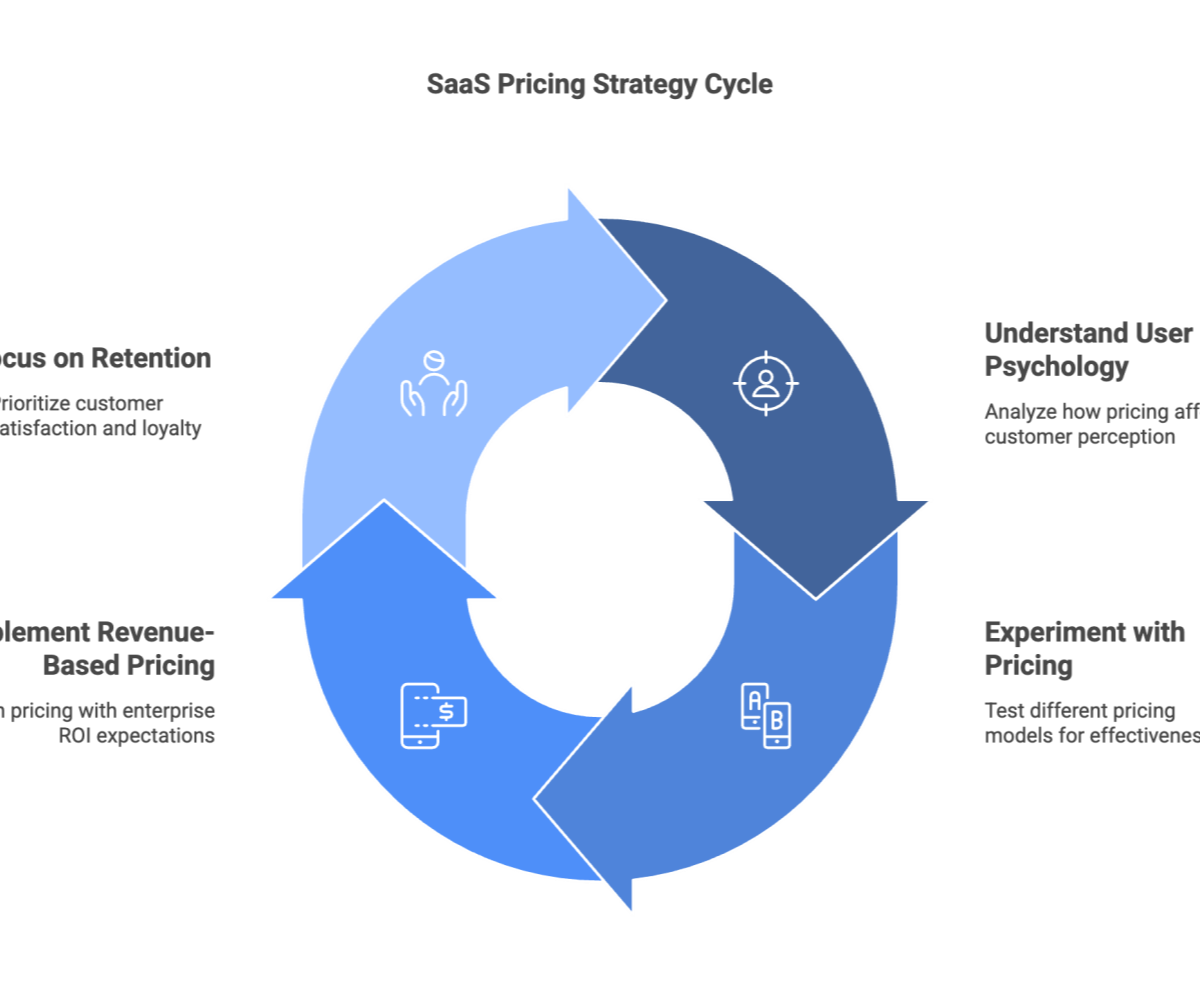

A well-crafted SaaS pricing strategy determines how effectively you monetize your software while retaining satisfied users. From tiered pricing and per-user pricing to freemium and flat-rate pricing, each approach presents unique pros and cons. The key lies in matching that model to your product’s core value proposition, user segmentation, and both short- and long-term revenue goals.
Remember that revenue optimization and customer retention go hand in hand. By blending behavioral pricing tactics, running continuous pricing experiments, and aligning cost with perceived ROI, you foster trust, reduce churn, and encourage upgrades rather than forced expansions. This synergy directly impacts how your SaaS pricing and packaging resonates with potential buyers and existing users alike.

Whether you rely on seat-based or usage-based metrics, remain open to iteration. Tweak your tiers, test new price points, and stay transparent about what each plan includes. By approaching your pricing strategy for SaaS as a dynamic process—rooted in data, competitive insights, and user-centric thinking—you’ll position your business to thrive in a crowded, ever-evolving SaaS landscape.
For additional insights, explore related articles like White Label SaaS Pricing and Usage-Based Pricing in SaaS.
